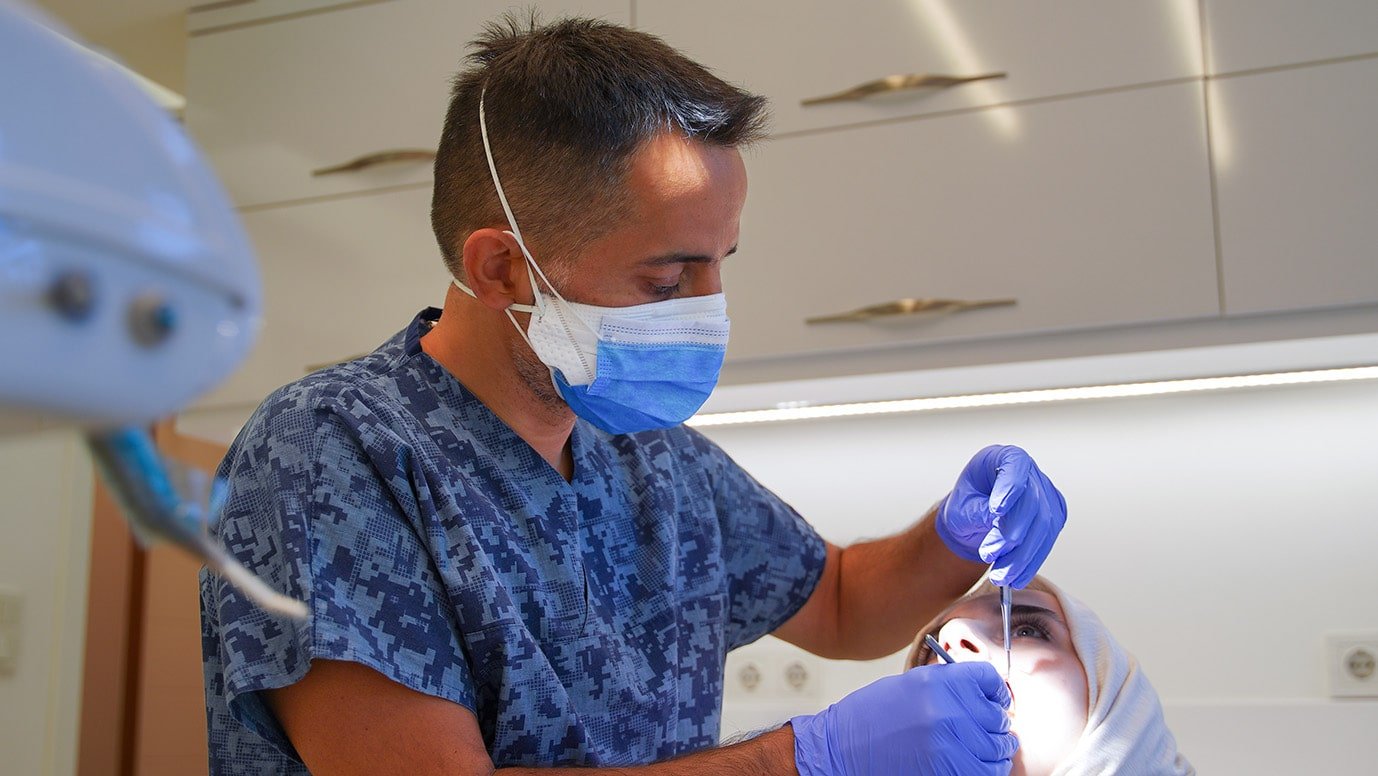Gum Treatment
Periodontitis is the inflammation of the bone and gingival tissues surrounding the teeth. The teeth are composed of the crown that we can see in the mouth and the ‘root’ embedded in the bone. The roots are also attached to the bone by thin fibers. In addition, the pink gum surrounding the inner face of the jawbone adheres to the neck of the tooth. Since gingivitis will affect not only the visible gingiva but also the bone tissue, an uncontrolled gingival disease may eventually cause loosening and pulling of non-carious teeth.


What are the Symptoms of Gum Inflammation?
Gum disease can sometimes be too advanced to go undetected. However, the observation of one or more of the following symptoms brings to mind the possibility of gum disease:
- Bad breath
- Red and swollen gums
- Bad taste in mouth
- Exposure of the root of the tooth by pulling the gums
- Swinging teeth
- Teeth that bend or become crooked over time
- Gum bleeding (while brushing or spontaneously)

Frequently Asked Questions
Yes, in fact, more often than tooth decay. Nearly all adults are affected to some degree by this disease, and in many cases, teeth with no caries are simply pulled out because they are loosened.
Yes. However, treatment depends on how advanced the inflammation is. Treatment performed only in the ‘gingivitis’ stage provides high success. During the treatment, your dentist will remove calculus and optimize your brushing technique. The next responsibility is on you. The proper cleaning will make your gums look pink and healthy. However, it is essential to start treatment as soon as possible.
Treatment begins with teaching you the proper brushing and flossing techniques. The next step is to clean the inflammations on your teeth and the root part by scraping by your doctor. This is called curettage therapy. This process usually requires several appointments. After your treatment is over, if you clean your teeth and mouth, you can watch that the redness and swelling in the gums disappear and your wobbly teeth hold on to your jawbone better.
The prices of gum treatment vary according to the type of material used, the size of the tooth and the position of the tooth. Prices also vary based on the number of teeth treated.
Dentistry prices vary widely. The cost of gum treatment is shaped by the type of materials used, the complexity of the procedure, and the competence of the dentist.
At the same time, the fees of the process vary according to the needs of the person and the desired result. There are differences in pricing depending on what composite is used and how much it is.
For more information about gum treatment:

